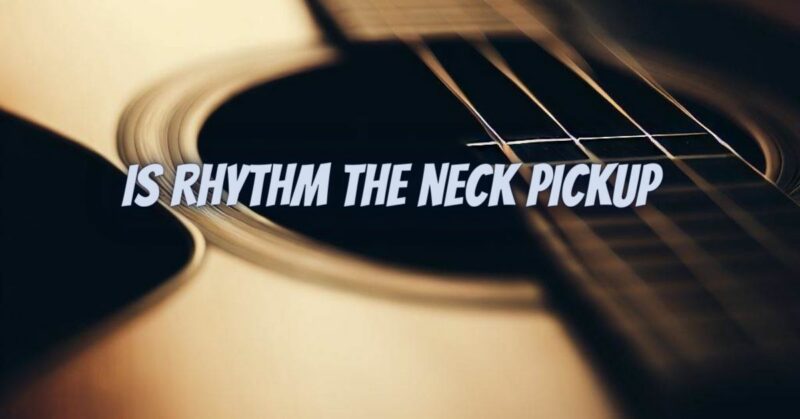In the world of electric guitars, the choice of pickups plays a pivotal role in shaping the instrument’s tone and versatility. Musicians often refer to the pickups as “tools of expression” because they influence how a guitarist conveys their musical ideas. Among the many considerations, one question frequently arises: Is rhythm in the neck pickup? In this informative article, we’ll explore the relationship between pickups, playing styles, and the concept of rhythm to understand how the neck pickup contributes to creating the perfect groove.
Demystifying Pickup Roles
Before diving into the specifics of the neck pickup and its role in rhythm playing, let’s revisit the fundamental differences between the two primary types of pickups found on electric guitars:
- Single-Coil Pickups:
- Design: Single-coil pickups consist of a single coil of wire wrapped around magnetic pole pieces. They are often characterized by their slender and narrow appearance.
- Tonal Characteristics: Single-coil pickups are known for their bright, clear, and articulate tones. They emphasize high frequencies, resulting in a crisp and well-defined sound. This brightness is often favored for lead guitar work.
- Humbucking Pickups:
- Design: Humbucking pickups, also known as humbuckers, contain two coils of wire wound in opposite directions, designed to cancel out electromagnetic interference and noise.
- Tonal Characteristics: Humbucking pickups tend to be warmer and less bright compared to single-coils. They produce a fuller, thicker sound with a stronger midrange presence. Humbuckers are often favored for rhythm guitar and heavy genres.
Rhythm and the Neck Pickup
Is rhythm in the neck pickup? While it’s not an absolute rule, many guitarists gravitate towards the neck pickup when playing rhythm parts, and there are several reasons for this preference:
- Warmth and Depth: The neck pickup is known for its warm and full-bodied tone. When used for rhythm playing, it can add depth and richness to chords, making them sound more robust and resonant.
- Reduced Brightness: Rhythm guitar parts often benefit from a less bright and aggressive tone compared to lead parts. The neck pickup’s reduced brightness helps achieve this desired warmth and mellowness.
- Strong Midrange: The neck pickup typically emphasizes midrange frequencies, which is essential for rhythm guitar. This midrange presence allows chords and rhythm patterns to cut through the mix and be more clearly heard.
- Sustain: The neck pickup’s tonal characteristics often contribute to improved sustain, allowing chords to ring out longer and create a more lush and full sound.
- Expressiveness: The neck pickup’s warmth and fullness can make rhythm playing more expressive and emotive, adding character to chord progressions and strumming patterns.
Versatility and Pickup Switching
While the neck pickup is a popular choice for rhythm guitar, it’s important to note that modern electric guitars often feature multiple pickups and pickup switching options. This versatility allows guitarists to access a wide range of tones for both rhythm and lead playing.
For example, the typical three-pickup configuration on a Stratocaster-style guitar allows you to switch between the neck, middle, and bridge pickups. By using different pickup combinations, you can achieve various tonal textures that suit different musical contexts and playing styles. The middle pickup, for instance, provides a balanced tone that can be ideal for versatile rhythm work.
Is rhythm in the neck pickup? While it’s not a strict rule, the neck pickup is indeed a popular choice for rhythm playing due to its warm, full, and expressive tonal characteristics. However, the versatility of modern electric guitars allows for experimentation with different pickup combinations to craft the perfect tone for any musical context. Ultimately, the choice of pickup and pickup switching should align with your musical preferences and artistic vision, as pickups serve as powerful tools for shaping your guitar’s voice and conveying the rhythm that drives the groove of your music.


